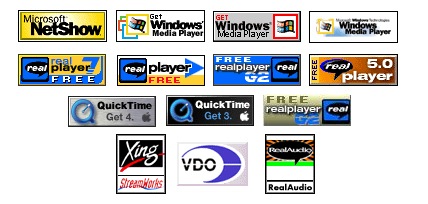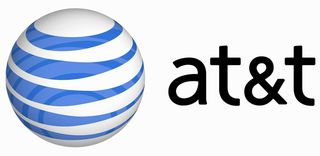[CDN consultant Frank Childs contributed to this article.]
As I wrote about last week, Akamai is looking to throw their hat into the telco CDN market with the development of a licensed CDN initiative (LCDN). Why the largest CDN player is now looking to enter this market, and more importantly, what it might mean for network operators is something I've been getting a lot of questions about. Akamai is in the development stage of their LCDN product and is still looking to hire engineers and others to build it out. So while it's too early to know what their product offering will look like, but here are some of Akamai's strengths and weaknesses when it comes to an LCDN offering.
Akamai has worked with network operators for years, installing their edge servers/caches inside the ISP's data centers. In the early days of the web, Akamai would receive payment from operators because of the perceived value to the operator. The ISP would save transit and backbone costs and would simultaneously improve the subscriber experience. Gradually, those payments from service providers have been drying up, but Akamai still gained access to regional data centers by promoting a win-win strategy.
The operator would give Akamai access to rack space, power, and network ports and in return would gain all the advantages of the Akamai caches inside the network. While they received no monetary compensation, Akamai would still get the benefits of being at the edge of ISP network with access to millions of subscribers, and free network bandwidth. This has been used by Akamai to differentiate their CDN offering on a worldwide basis as their servers/caches were closer to the end user, typically referred to as the last-mile.
Now that ISPs are developing their own CDN offerings, Akamai is trying to capitalize on this trend by developing a licensed CDN (LCDN) product to sell directly to network operators or through traditional telecom vendors such as Ericsson (see announcement). I have had several conversations with network operators, and while Akamai has proven technology, there are clearly several significant challenges that they will face to gain entry into these telco CDN projects. But first let's look at why an operator looking to jump start their CDN offering would consider Akamai:
Large Customer Base and Content Relationships: Akamai is the largest CDN and serves more traffic than any other CDN network. Depending on the structure of the LCDN deal, an ISP may gain instant access to a number of content companies looking for closer proximity to their subscribers. The ISP wins by quickly turning up a proven CDN; Akamai wins by licensing technology and by differentiating their CDN; Akamai's customers win by improved service quality, and the ISP subscribers win by a more responsive Internet delivering a higher Quality of Experience (QoE).
Proven Technology: Akamai has been doing this longer than anyone, and clearly knows all of the required components behind delivering a CDN platform. While many other vendors focus on specific elements within the CDN ecosystem, for instant just video, Akamai can deliver a platform that is more diversified and handles content caching, dynamic site accelerating, video delivery, etc. By going with a platform that addresses many different types of content delivery, an operator may gain a more complete solution from day one and avoid the costly process of having to integrate and manage multiple CDN elements from multiple vendors.
Internet Video Services: Akamai was early to the game of delivering video over the Internet (via their acquisition of INTERVU in Feb. of 2000), and while they may have lost some traffic to Level 3, Limelight, and others, they are still a dominant player that knows the space. At the same time, many ISPs today offer their own video services including linear broadcast channels, premium channels, and Video-on-Demand (VoD). In most cases, these ISPs are looking at increasing internet video services to complement existing triple play offerings. These services include: web content portals; three screen offerings; iPad and tablet apps; streaming to Internet set-top devices (Xbox, Roku, Boxee, etc.); and partnering with OTT video services (YouTube, Hulu, etc.). Some operators have developed their internet video offerings internally using vendors such as Cisco (Telstra announcement). Others are clearing looking for a more turnkey video solution which is what Akamai is looking to provide.
Clearly Akamai has some distinct advantages as they look to productize an LCDN offering. But they also have some serious challenges that will need to be addressed.
Not Embedded in the Network: To date, Akamai's direct interface with the broadband infrastructure has been minimal. They connect to network ports within their regional data centers, like many application servers. They have been accustomed to sitting in the data center and using DNS to receive traffic specifically for their customers. Moving closer to the broadband subscriber edge will require a tighter integration between their cache engines and other network elements which may include edge routers, Radius servers, policy management, and traffic management. Developing products that are more tightly integrated with other network elements has never been Akamai's focus, and it is certainly not trivial.
Telco, MSO, and ISP expectations and requirements of any network element that directly interfaces with the edge of their network are very different from what Akamai is accustomed. This is the world of Ericsson, Alcatel-Lucent, Cisco, Juniper and the like. Being able to identify and deliver on these requirements, and create the necessary partnerships, will be a challenge and will largely determine Akamai's level of success for the LCDN.
Does Not Support All Traffic: As network operators discuss moving caching and CDN capabilities closer to the edge of their networks to greatly reduce costs, improve network efficiency, and deliver superior performance, they desire a cache engine that addresses the most amount of traffic. The ISP would like to optimize their network in the most efficient manner, and they certainly do not want to deploy and manage multiple solutions. So an approach where they would need an Akamai cache, and a Google cache, and an Apple cache, and VoD server will not fly. It remains to be seen whether Akamai will offer a solution that is comprehensive enough to include traffic regardless of its point of origin.
Secretive Style: I have spoken to many Akamai customers that feel the company's service operates too much as a black box and that customers have very little transparency into how Akamai's network actually works. When it comes to analytics, they tell you what they see fit. When it comes to how they operate, the same rule applies. Telcos, MSOs, and ISPs are not in the habit of deploying black boxes in their networks. That may be fine for an application sitting in the data center, but not when deployed closer to the edge of the network where an incident could affect tens of thousands of customers. And not for something as strategically important as video and CDN.
So if Akamai really wants to play in the telco CDN space, they are going to have to participate in the telco RFI/RFP process, and respond in detail on their capabilities, processes, roadmap and the like. In addition, they are going to have to allow the telco to deploy, operate, maintain, and report on the inner workings of the CDN, because it will be their product. This is not something Akamai is accustomed to culturally, and will represent a significant shift in their actions if the want to sell into the telco space.
Is this a trojan horse strategy?: This is a real question and concern that I hear from network operators. Perhaps the greatest challenge that Akamai faces is in convincing operators that their intentions are pure, and that this is not principally a strategy to gain valuable real estate inside the ISPs network. Fifteen or so years ago, Akamai sold web caching to ISPs, and used that position to gain an upper hand in the nascent world of CDN. As the value to the ISP began to shrink, network operators began to view Akamai as someone who consumed massive amounts of bandwidth and got a free ride. Now they have to convince the ISP that this time is different, and that the offering is genuinely for licensing technology to the ISP to delivery video and other content. There certainly is a growing market for this technology, but from many conversations that I have had, network operators are not yet convinced that Akamai is the answer to their problems; both technically, but more important strategically.
While it's too early to know how this will all play out, I think Akamai has a shot at being successful with an LCDN offering, but only if they can change the culture of the company and provide a lot more transparency into their technology and develop a platform specific to telcos that has a much deeper integration into the network. If Akamai can't do that, I don't think they can truly be successful with an LCDN offering and that could potentially impact how they are deployed inside last-mile networks.


